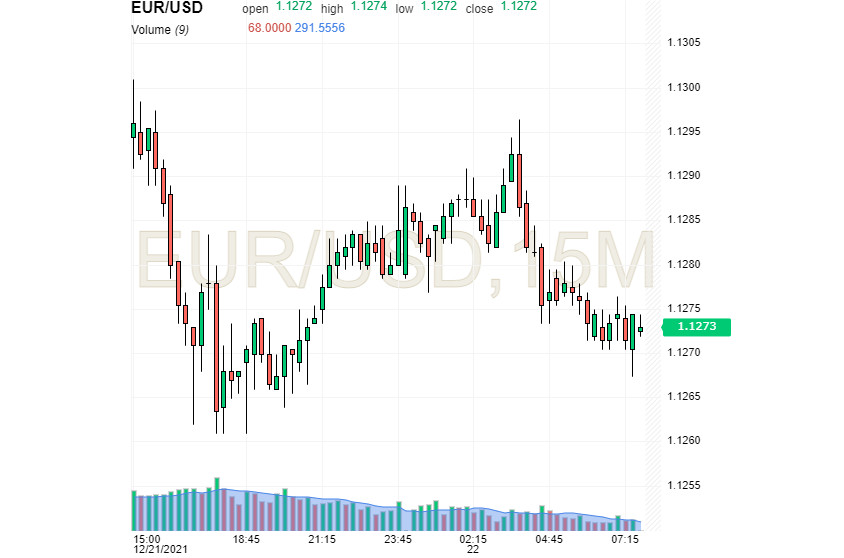

The US currency is fluctuating again, heading from a recent growth to a temporary fall. At the same time, its possibility to sharply increase is in question.
The traditional Christmas and New Year rally of the US dollar and the EUR/USD pair, which the markets had been looking forward to the most, was limited to short surges. The slowdown in the pair's dynamics was facilitated by the spread of the COVID-19 strain Omicron and the European gas crisis, which worsened the market volatility. At the same time, the euro hardly reacts to the sharp aggravation of the gas crisis in Europe. It can be recalled that the prices of natural gas reached €180 per megawatt-hour – an absolute record in the outgoing year.
Current difficulties have weakened the American and European currencies. Despite a slight decline today, the US dollar is given confidence by the upcoming macro-statistical reports on the dynamics of US GDP for the past quarter. According to preliminary estimates, the indicator will remain at the same level, showing an increase of 2.1% in annual terms.
The US currency is under pressure for the third session in a row, as investors give preference to risky assets. On Wednesday morning, the EUR/USD pair traded at the level of 1.1273, remaining in the current range of 1.1200-1.1350.

Based on analysts' observations, the pair is stagnating. The EUR/USD pair has been standing still for a long time, raising concerns about its reaching the bottom. However, many believe that it may go to lower levels (around 1.1000). The implementation of such a scenario will surprise strategic sellers of USD.
However, nothing will prevent the US dollar from celebrating this year with a triumph. According to economists, 2021 turned out to be a jackpot for this currency. Experts emphasize that it strengthened against each of the rival currencies of the "Big Ten" (G-10), which has not been recorded for several years. Experts said that an increase in real profitability played a key role in this issue.
The Fed's current decision to raise rates in 2022 and to curtail stimulus measures as soon as possible is also important for the US dollar. Many analysts call the regulator's move to tighter monetary policy a turning point in the global economy. However, some question whether the proposed measures are sufficient to "curb" rapidly rising inflation. At the same time, the Fed continues to buy billions of dollars worth of bonds every month, despite mounting price pressures.
The statement about the "temporary" nature of inflation has long been criticized. Most experts are not confident that the current inflation of 6.8% is capable of returning to the 2% target. To do this, incredible efforts should be made, the success of which is doubtful. Earlier, Kevin Warsh, the former Fed governor, sharply criticized the regulator's policy, blaming it for the current surge in price pressure.
"The risk of an inflationary spiral increases when the problem is initially ignored, and then when looking for the culprits. Inflation becomes an integral part of the pricing process when the central bank acts late or is not confident in its abilities. At the moment, the Fed is acting as a trigger," Warsh sums up.
The situation right now has an extremely negative impact on the dollar's dynamics in the near planning range, which risks starting 2022 with a decline.